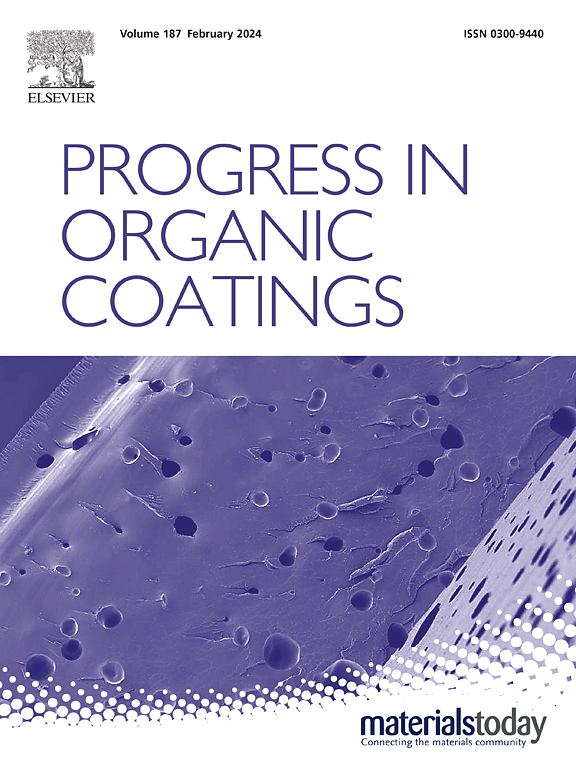Improvement of fire protection properties of epoxy coatings with cobalt-zinc based metal-organic frameworks and siloxane co-loaded alginate fibers as nano-reinforcing agents
IF 6.5
2区 材料科学
Q1 CHEMISTRY, APPLIED
引用次数: 0
Abstract
Alginate fibers (ORF), as an organic fiber, have the natural advantage of good compatibility with epoxy resins. However, it is unable to adequately serve as a reinforcing residual char at high temperature due to its greater tendency to form amorphous char. To address this shortcoming, Co, Zn-MOF was uniformly immobilized on the surface of ORF, which accelerated the transformation of resin matrices to stabilized carbonaceous materials. Simultaneously, the Co, Zn-MOF could induce the conversion of the ORF into residual carbon and retain its fiber structure, thus serving the purpose of reinforcing the residual carbon. After that, the organosilicon was loaded on the surface of ORF/Co,Zn-MOF to obtain ORF/Co,Zn-MOF@Si composite flame retardant, which could form a stable silicon network at high temperature, thus effectively slowing down the heat transfer process. The experimental results proved that the ORF@Co,Zn-MOF@Si filled EP exhibited maximum tensile strength (12.2 ± 0.51 Mpa) and impact strength (18.3 ± 0.56 KJ/m2). Further, the ORF@Co,Zn-MOF@Si/EP composite coating had a significantly lower backside temperature (166.4 °C) than other coatings, signaling optimum thermal insulation efficiency. It is worth mentioning that the ORF@Co,Zn-MOF@Si/EP samples achieved a significant residual carbon retention rate (31.9 %) in the heat loss assessment session, which is attributed to the catalytic effect of Co and Zn ions on carbon generation within the Co,Zn-MOF framework. The expansion height and expansion rate of the ORF@Co,Zn-MOF@Si/EP sample were 19.60 mm and 15.2, highlighting a significant enhancement in foaming behavior. Besides, some fibrous structures can be clearly observed in the carbon layer of ORF@Co,Zn-MOF@Si/EP, which can be explained by the catalytic carbon-forming effect of Co,Zn-MOF and the protective effect of silicon network.

求助全文
约1分钟内获得全文
求助全文
来源期刊

Progress in Organic Coatings
工程技术-材料科学:膜
CiteScore
11.40
自引率
15.20%
发文量
577
审稿时长
48 days
期刊介绍:
The aim of this international journal is to analyse and publicise the progress and current state of knowledge in the field of organic coatings and related materials. The Editors and the Editorial Board members will solicit both review and research papers from academic and industrial scientists who are actively engaged in research and development or, in the case of review papers, have extensive experience in the subject to be reviewed. Unsolicited manuscripts will be accepted if they meet the journal''s requirements. The journal publishes papers dealing with such subjects as:
• Chemical, physical and technological properties of organic coatings and related materials
• Problems and methods of preparation, manufacture and application of these materials
• Performance, testing and analysis.
文献相关原料
公司名称
产品信息
阿拉丁
Cetyltrimethylammonium bromide (CTAB)
 求助内容:
求助内容: 应助结果提醒方式:
应助结果提醒方式:


